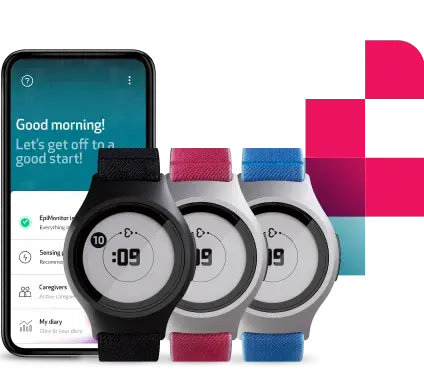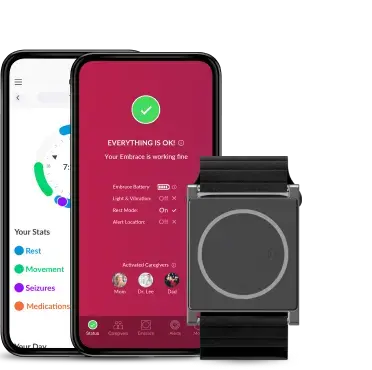Brydee’s Embrace Story: She is her mother’s strength
Brydee couldn’t wait to see mom and dad, so she came into the world a bit too early: six and a half weeks ahead of time. Although she experienced some health issues from a young age, she developed a unique personality, helping out on the farm and developing a special bond with the animals she helps to take care of.
In this Embrace story, Angela, Brydee’s mom, tells of her precious 13-year old’s life and how they discovered that she had epilepsy after many misdiagnoses by different doctors. She also shares about Brydee’s seizure triggers, the things they do to avoid them, and how Embrace has helped them manage her condition.
Her Story
Brydee is 13 years old and loves living life on the farm, helping rear the dairy heifers from her pop and granny’s dairy farm across the road. She loves helping in the afternoons to bring the cows into the bales to be milked with granny, going with pop or her uncle to start or shift irrigators (as there is surely a little mischief to be had), or helping her aunty and baby cousin do odd jobs. Her patience with the new baby calves gets her the job of starting them off on their first feeds while I feed up the others. She has a real passion for her animals and forms special bonds with many of them: from her cows to alpacas or sheep, she loves them all. She has a caring and loving nature, which shines through in her smile and hugs.
The journey to diagnosis
Brydee’s journey began when she couldn’t wait to meet everyone and was born early. I was flown from our local hospital by the Royal Flying Doctor Service to Brisbane after my water broke early. The next day, my baby was in distress, so I had to have an emergency C-Section. Then, our beautiful bundle of joy came into the world.
From a young age, Brydee had some health issues. Reflux and a torn muscle in her neck meant some delays. She walked at 23 months. At this stage, she had bouts of vomiting that lasted for 24 hours, around every 3 weeks. As she got older, just before the vomiting, I’d notice some small twitching or jerking, but questioned myself as it lasted only seconds before the vomiting would start. By the time Brydee turned three, the jerking and twitching were more pronounced and lasted a couple of minutes before, again, the vomiting would start.
After many misdiagnoses from different doctors, her GPs, and hospital staff, we were finally sent to a neurologist who requested an EEG and MRI. We were told at our first appointment that he would call us with the results. Surprisingly, a few days after our appointment, we received a phone call to say the neurologist wanted us back at the hospital in person. My heart nearly stopped. What had they found wrong in our little girl? I was sick to my stomach.
We went to the hospital and were told that the MRI showed scarring on her brain for the parts that are for walking and sight. Thank goodness the news came then when she was already walking and could see. Our brains are truly miraculous! We sat down and received the news from the neurologist that our girl had “epilepsy”. Relieved, I responded, “Oh, is that all?” We knew something wasn’t right and had been going through these turns, but now we had a name for it. It wasn’t a new illness or condition.
She started taking medication soon after, as she had started having prolonged tonic-clonic seizures. At a visit, we were also given midazolam to administer due to where we live and the length of time it would take for help to arrive if anything happened.
The scariest seizure that I remember
When Brydee was 6, she suffered a seizure which resulted in her stopping to breathe. I was on the phone, ambulances had been sent from all directions, and I was being walked through step-by-step how to bring my daughter back with CPR.
I hadn’t done a first aid course in 6 years. After her seizure, while she was admitted to the hospital, a psychiatrist had a chat with me, and we came up with a plan to make me feel more in control again. A refresher CPR course was a great start, and our neurologist arranged for us to have and be able to administer oxygen at home if and when needed.
So how do we manage her epilepsy?
Brydee has many triggers: from glare off the ocean to flickering lights, illness, not enough sleep, heat, exhaustion, worry, and stress. Sudden loud noises can also be a trigger: a plane from the local Royal Australian Air Force flew above us driving down the highway (super, super loud), and she had a seizure.
When outside, Brydee is always in sunnies (sunglasses in Australia!). At Christmas, we try to avoid places with flickering or flashing lights. We also try to keep her well and make sure that she wears a mask in heavily populated areas during our flu season (when going to the doctor, chemists, etc). We try to keep her cool when possible and stick to a sleep routine (which sometimes feels impossible in all honesty).
Brydee does schooling through distance education. She does online lessons and loves learning this way with daily interaction with subject teachers and classmates. She is thriving in this schooling environment.
She encourages us every day
Despite all this, she is honestly my strength. Brydee may be the one who needs more care and attention, but it is her spirit and courage that lifts us all and keeps us going day-to-day.
She is a girl of faith and loves going to our local, little country church. She’s passionate about farm life and her animals. She loves watching anime, drawing, and writing. She loves the world’s biggest boy band, BTS, from South Korea, and tells anyone willing to listen all about them. A true fan!
Brydee would love to be a K-Pop idol. And if that doesn’t work out, she would like to be a webtoon artist and writer while living on the farm!
Life with Embrace
Brydee started sleeping in our bed from a fairly young age. I was her seizure monitor. We tried the seizure mat, on her bed in our room when she was about 5. I was still needing the reassurance that she was okay, and I think she picked up on my feelings and didn’t want to go to her room.
I was her seizure monitor until we discovered Embrace.
About 3 years ago, a lady that my sister works with was looking into the Embrace watch for herself as she had started having seizures in her 30’s. My sister mentioned it to me. I did some research and quickly decided that the Embrace would be a great fit for Brydee and her epilepsy.
Click here to check if Embrace is right for you!
Since then, Embrace changed our family’s life. Brydee now sleeps in her bed, in her room. She is so confident in herself, and it has given her independence. As a parent, I feel reassured that she is safe that Embrace has my back while she sleeps, and I can sleep better.
I love the fact that it will detect my daughter’s seizures and will send her location with a text and a phone call. A seizure won’t go unnoticed with both notifications. Brydee is tech-savvy and happily adjusts the settings to suit sleep or activity. She more than handles "false alarms" and sends notifications through the app too. On the rare occasion that I need to, I like that I can add and later delete caregivers who I want to be alerted in the event of a seizure while Brydee is not in my immediate care.
I would absolutely recommend the Embrace to other families that have someone with epilepsy. It has built confidence in my daughter and allowed her independence and a little freedom from me always watching her or being by her side. It is the device that will have your back as a carer.
One piece of advice: learn its functions and features and use it to its full advantage and potential.
More Embrace Stories will be published soon! To share yours, feel free to write to us at support@empatica.com or post your story on Facebook or Instagram by tagging our page (respectively @Empatica on FB, @empatica_wearables on IG) or the hashtag #EmbraceWatch.
Embrace is a prescription-only medical device indicated as an adjunct to seizure monitoring (subjects age 6 and up with epilepsy or at risk of epilepsy) in home or healthcare facilities during rest. Embrace detects patterns that may be associated with generalized tonic-clonic seizures. For safety information, please refer to Embrace IFU.
Words worth reading
We do not guarantee that EpiMonitor will detect every single seizure and deliver alerts accordingly. It is not meant to substitute your current seizure monitoring practices, but rather to serve as a supplement in expediting first-response time.



